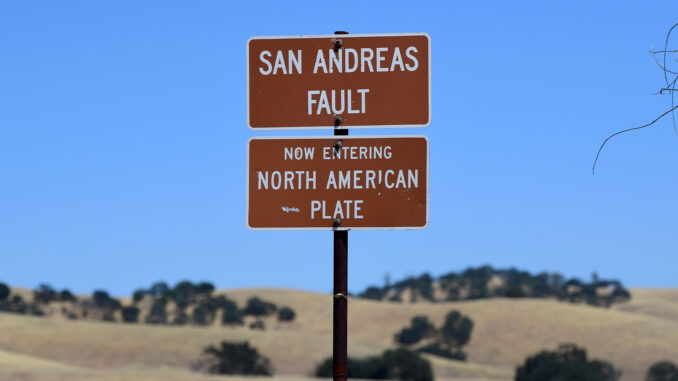
California could experience a major earthquake this year according to a study that tracks San Andreas Fault activity
The famous fault line that runs through California could be months away from having the largest seismic event in two decades.

BYPASS THE CENSORS
Sign up to get unfiltered news delivered straight to your inbox.
You can unsubscribe any time. By subscribing you agree to our Terms of Use
Latest Video
The new study has found quakes happen every 22 years at the Parkfield section of the San Andreas Fault in central California, which runs through Eureka and ends just past Palm Springs.
Parkfield is suspected to be nearing the end of its quiet period and an earthquake could strike the fault line this year, according to the study’s lead researcher.

Metro reports: Measurements there are behaving a bit oddly, though, according Luca Malagnini, the director of research at the National Institute of Geophysics and Volcanology in Italy.
He told Live Science that he suspects there will be a quake in the area at some point this year – but not necessarily at Parkfield.
At the moment, there are no telltale signs which could indicate cracks precipitating an imminent quake, according to a study published in the journal Frontiers in Earth Science last month.
Mr Malagnini said the variation in attenuation measurements has dropped very low since 2021, however, and that this happened before the last rupture there on September 28, 2004.
‘We are waiting,’ he said.
The faultline has so far been predictable as far as geology goes, generally experiencing an earthquake around every 22 years (so by that measure, it would next occur in 2026).
Years when the quake has been overdue are generally when another quake elsewhere on the fault has taken pressure off.
However, there has not been a similar pressure-relieving event this time, so scientists don’t expect it to be overdue.
Mr Malagnini’s study looked at seismic wave attenuation, which is how sound waves lose energy as they move and depends on the permeability of rock.
Given that cracks up to 1.5km can open up before a quake, the sound conduction quality of the rock changes in that time too.
‘However, the behavior of the attenuation parameter in the last few years seems substantially different from the one that characterised the years prior to the 2004 mainshock,’ the study says.


